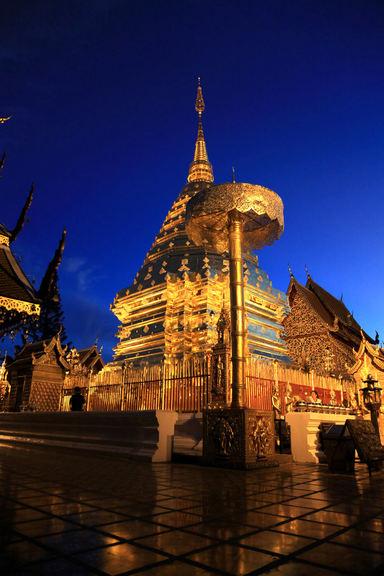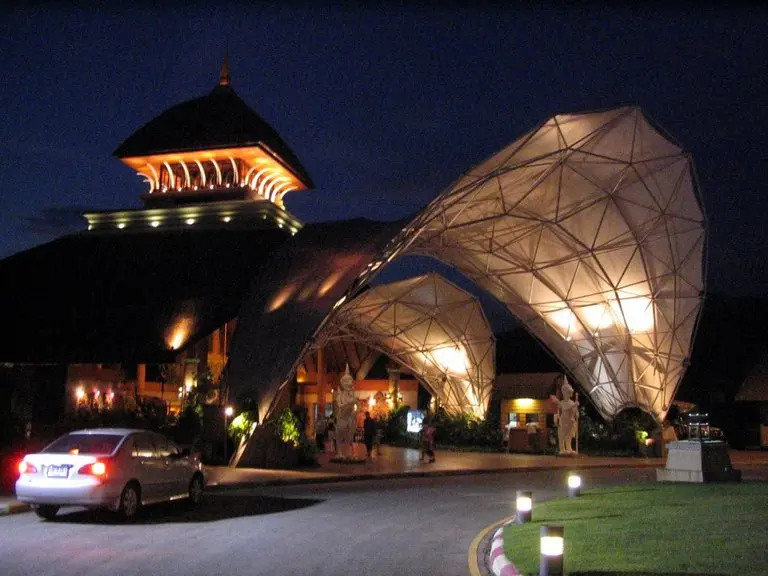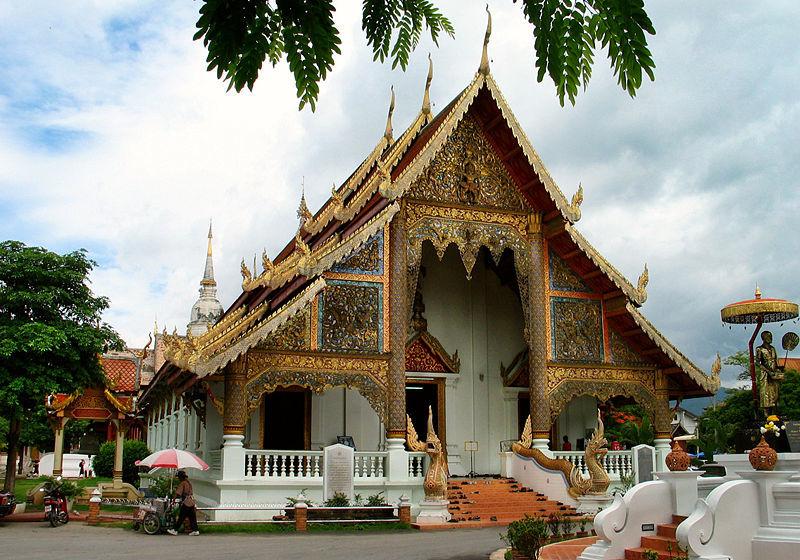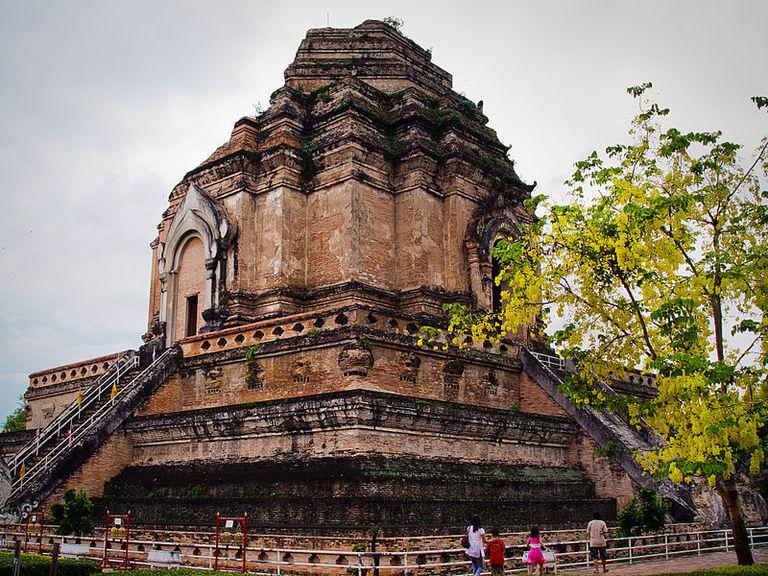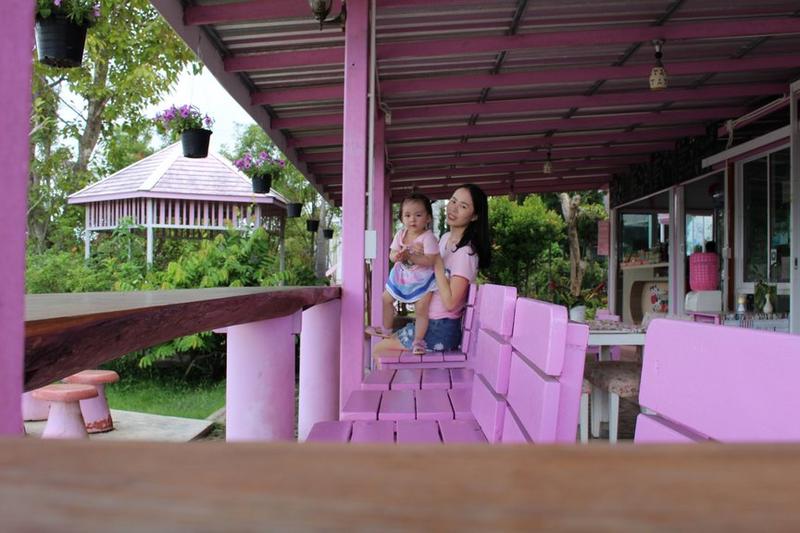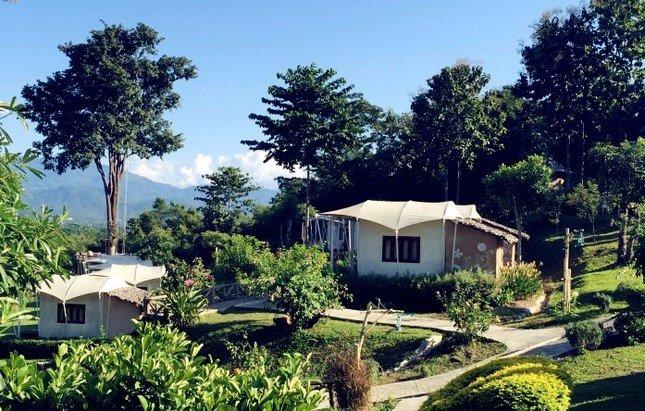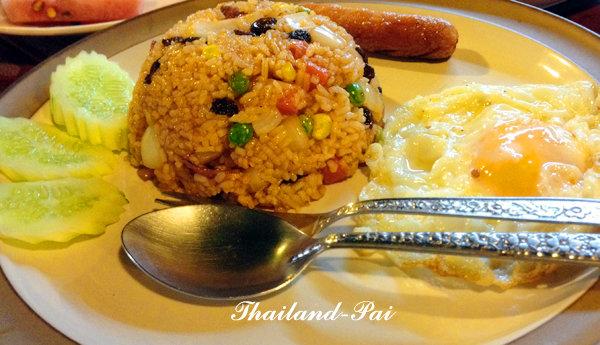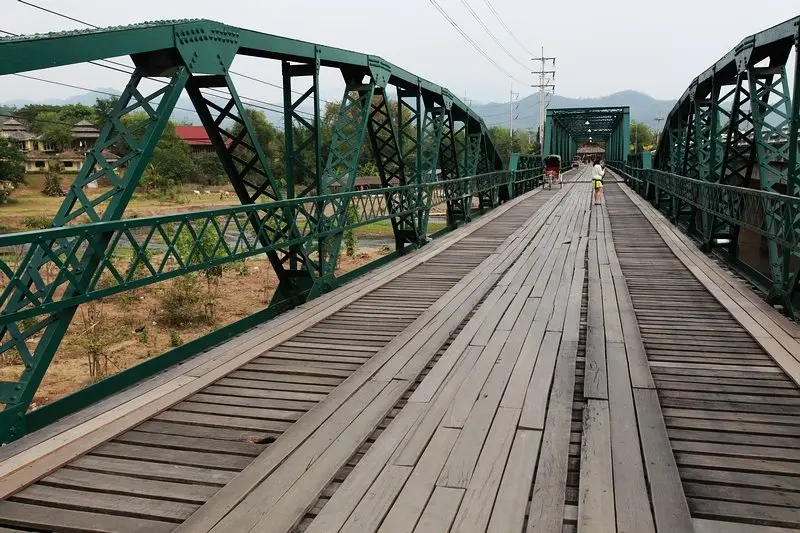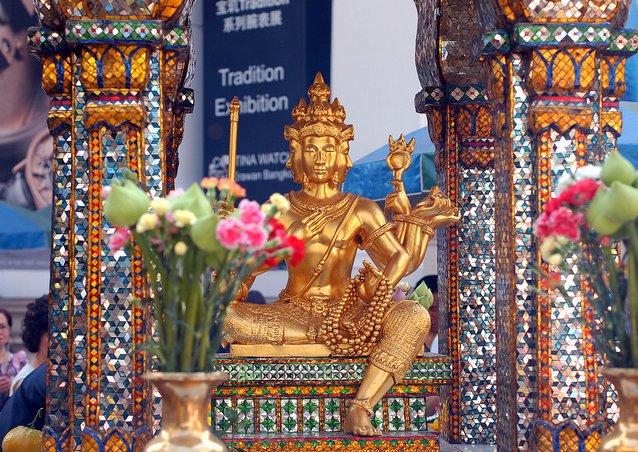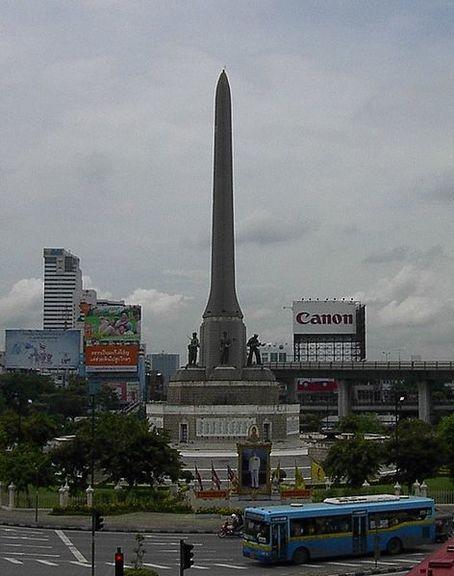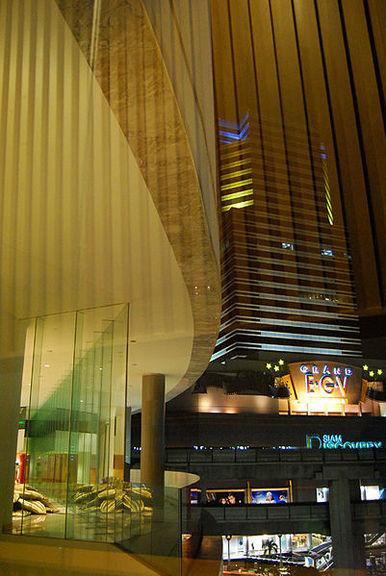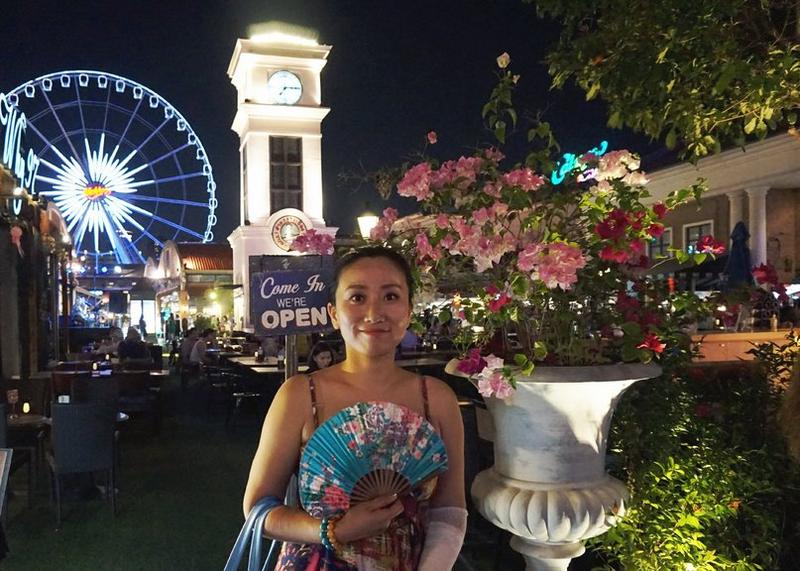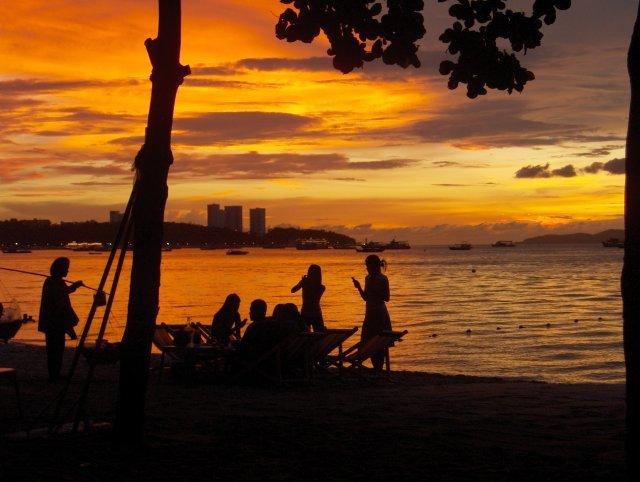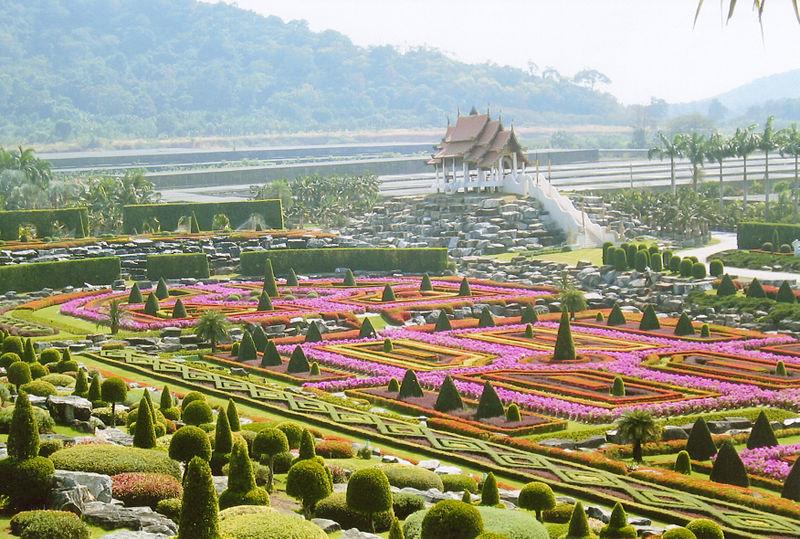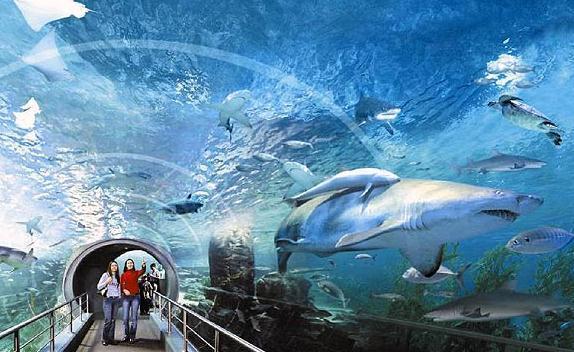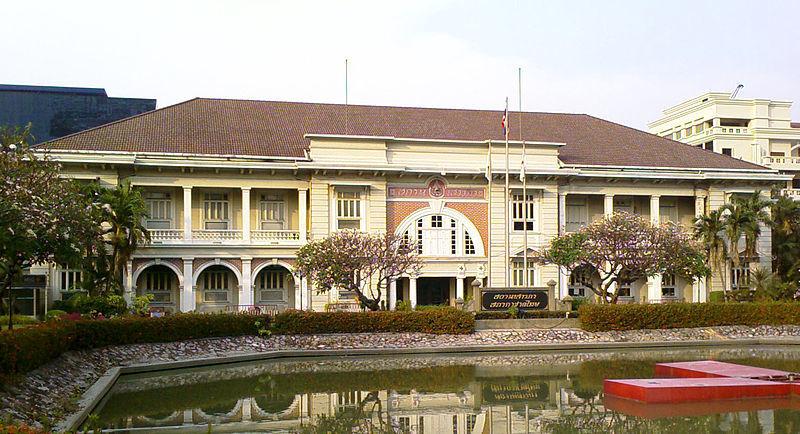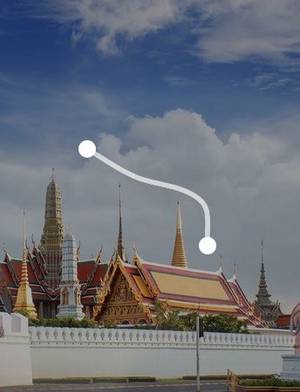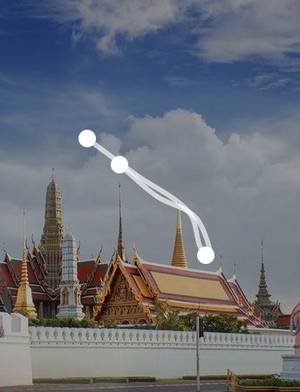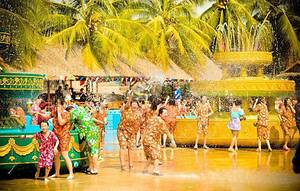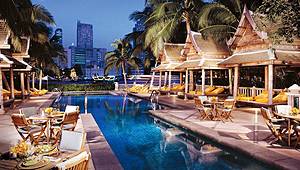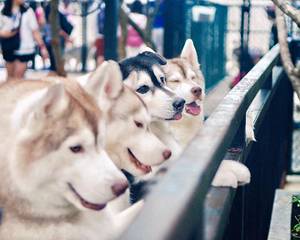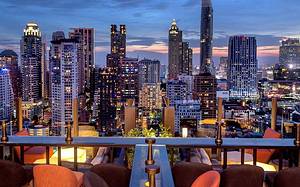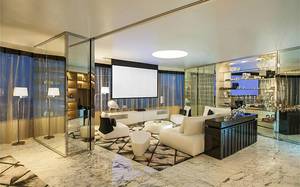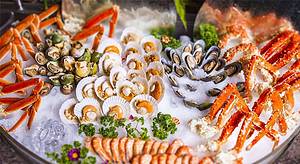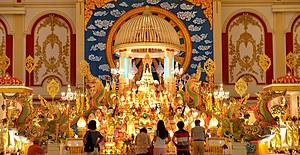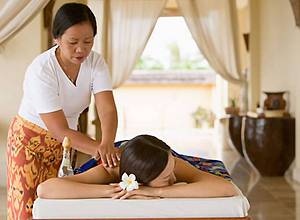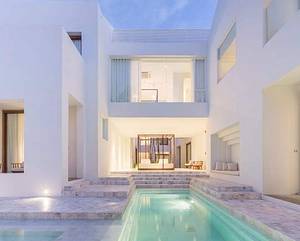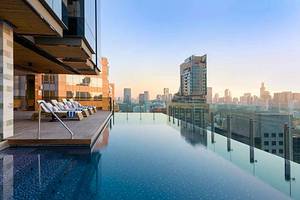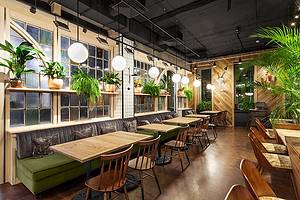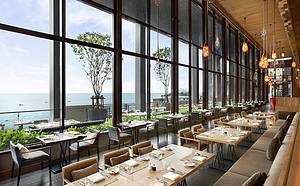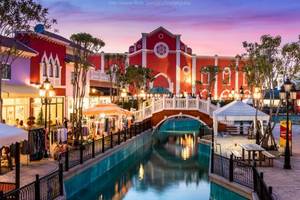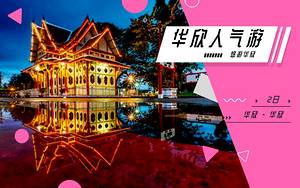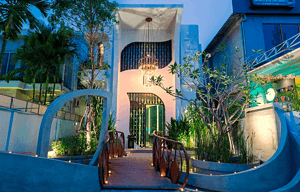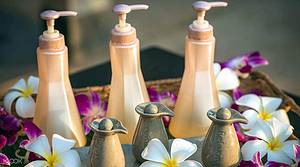10-day trip of Thailand
4 cities |
35 attraction(s) |
total distance 188
km
 TIPS
TIPS
Day1
Day2
Day3
Day4
Day5
Day6
Day7
Day8
Day9
Day10
Day1: Chiang Mai
5 attraction(s) ·
36 km
1
Doi Suthep is a 1676-meter high mountain named after the hermit Sudeva who lived there for many years. It is a popular tourist destination with dense forests. The mountain slopes are covered with colorful roses, and the mountaintop is surrounded by white clouds, offering beautiful scenery. The viewpoint at the top, reached by climbing 300 steps, offers a panoramic view of Chiang Mai city and is a natural lookout point. The mountain is also known as "Yuxian Mountain" or "Huixian Mountain" by the local Chinese. Doi Suthep National Park was established in 1981, and there are several temples nearby. If you visit Chiang Mai, be sure to visit Doi Suthep to overlook the city. It is also popular among birdwatchers and hikers.
1
km
2
Doi Suthep is located 16 kilometers west of Chiang Mai, with an elevation of 1667 meters. The top of the mountain offers stunning views of Chiang Mai city. A 300-step staircase leads to the observation deck, making it a natural lookout point. The temple on Doi Suthep, known as Wat Phrathat Doi Suthep, was built in 1383 and houses a golden stupa containing the relics of the Buddha. The temple is also known as the "Temple of the Double Dragon" due to the two dragon statues on the staircase. The mountain is considered a sacred place by locals and offers panoramic views of Chiang Mai and its surroundings.
6
km
3
Phu Ping Ratchaniwet Palace is the royal palace and summer residence of the Thai royal family, completed in 1962. It is a Thai-style architecture with lush gardens and beautiful flowers. The palace is located on the Suthep Mountain and offers a cool and serene atmosphere. It is a popular destination for tourists and a great place to escape the summer heat. The palace can be visited along with the nearby Doi Suthep Temple. The entrance fee is 50 THB for foreigners and 20 THB for locals. The palace is open from 8:30 am to 4:00 pm on weekends and public holidays. The garden is open daily from 8:30 am to 4:15 pm.
17
km
4
Chiang Mai University, founded in 1964, is the first institution of higher learning in Northern Thailand and the first national university in Chiang Mai. It is currently ranked second in Thailand and covers an area of 14 square kilometers. The university has 107 faculties, with over 18,000 students and more than 2,000 teachers. While Chiang Mai University's overall academic level may not be comparable to some renowned universities in Bangkok, its engineering and medical technology programs are outstanding, earning the university a reputation. The campus is located 2 kilometers west of the city center, very close to Doi Suthep Mountain.
12
km
5
Chiang Mai Night Safari, located at the foot of Suthep Mountain, covers an area of nearly 100 acres and is the largest zoo in Thailand. In addition to various exotic animals, the park also features scenic gardens, waterfalls, and lakes, offering beautiful scenery. From the mountain top, you can overlook the entire city of Chiang Mai.
Day2: Chiang Mai
5 attraction(s) ·
8 km
1
Phra Singh Temple was first built in 1345 as a memorial to Pa Yo's father. It is the largest temple in the ancient city of Chiang Mai and attracts the most visitors. The temple is famous for its statue of Phra Singh. It is one of the highest and largest temples in Chiang Mai, alongside Wat Chedi Luang. The temple was initially built by King Mangrai in 1345 and has been expanded multiple times. It houses the ashes of King Kawila and features a gold-plated hall with exquisite wood carvings. There are also murals depicting the daily life of Chiang Mai residents and the temple in the 19th century. The temple is named after the revered gold-plated Phra Singh Buddha image. There are also similar Buddha images in Bangkok and Lopburi, said to be made in Sri Lanka. The temple also houses a collection of beautifully crafted manuscripts. The Bai Lai Pavilion is located in the corner of the temple, featuring white walls and a golden wooden door. Inside, there are murals depicting traditional clothing and customs of the region, representing traditional art of northern Thailand. The library inside the temple holds many classic works, and the walls are decorated with statues of goddesses in the "wai" (respectful gesture) pose. There are two white mythical creatures at the entrance. The temple is brightly lit and adorned with traditional music performances. The main hall has a more understated ivory-white color scheme. The outer walls of the temple feature large advertisements related to Buddhism. Opposite the temple is Wat Pha Bong.
1
km
2
Located at the southern end of Phra Pokklao Road in the old city of Chiang Mai. It is famous for its visually stunning Great Buddha Stupa, which was built in 1411. It is one of the most famous of the six major temples in Chiang Mai and is considered one of the most revered temples in Chiang Mai alongside Wat Phra Singh. The entrance is adorned with snake and peacock decorations, and there is a huge Buddha statue inside. Behind the main hall is a magnificent square Great Buddha Stupa, which was first built in 1411 and has been expanded several times since then, reaching a height of 90 meters. In 1545, a major earthquake struck Chiang Mai, causing the pointed top of the Great Buddha Stupa to collapse overnight, revealing the golden Buddha statue inside. Despite being destroyed by the earthquake, it remains the most magnificent building in Chiang Mai.
1
km
3
The ancient city is in a square shape, with each side of the city wall and moat measuring about 1.5 kilometers long. It is well-preserved and is one of Thailand's important cultural heritages, with numerous beautiful and quiet ruins. Inside the ancient city, there are many traditional Thai temples, pagodas, as well as a variety of distinctive hotels, guesthouses, cafes, and restaurants. There are many ancient city gates, with the East Gate Tappei Gate being well-preserved. Famous temples inside the ancient city include Wat Chedi Luang, Wat Phra Singh, and Wat Chiang Man (the oldest Buddhist temple), most of which can be visited free of charge, except for a 20B admission fee for foreigners at Wat Phra Singh. The famous Sunday Night Market is located inside the ancient city, with the street leading from Tappei Gate being the entrance.
1
km
4
The East Gate of Chiang Mai's Old City is the starting point of the Night Bazaar and a landmark that is easy to find. It's a great place to experience the local culture and interact with locals. Visit the Warorot Market to engage in small-scale trading and truly experience life in northern Thailand.
5
km
5
Chiang Mai's smallest commercial area, art district. It's not only a great place for shopping, but also home to many unique cafes and galleries.
Day3: Pai
5 attraction(s) ·
6 km
1
The Heart of Pai is a unique upside-down hut located within The Heart of Pai Resort in Pai County. It is a man-made landscape and not intended for accommodation, but its distinctive design makes it one of the must-visit landmarks in Pai County.
2
km
2
The Pink House is called Pai Waan in English. It is actually a Hello Kitty themed hotel, with pink everywhere. Its iconic building is a pink jeep, perfect for girls with a dreamy and girly heart.
1
km
4
Mari Pai is located next to Coffee in Love in Pai County, about a 5-minute drive from the center of Pai (by motorcycle). It is a filming location for "Love in Pai" and attracts many visitors due to its excellent location and fairy-tale-like atmosphere. It has a very tall tree with a very long swing, which attracts many people to come here for photos. It is also considered a major attraction in Pai County.
3
km
5
Pai's night market is lovely. There are many cheap and delicate things. There are many delicious options, such as BBQ, pizza, mango rice, and beverages served in bamboo cups. You may also encounter Blue Boy's performance art and Captain Jack's smoky makeup at the night market.
Day4: Pai
3 attraction(s) ·
4 km
1
The Pai Canyon is located between Pai and Chiang Mai, 8 kilometers away from Pai. Visitors can climb up the observation deck along the stairs to overlook the cliffs and the Pai Canyon. The canyon can be reached via a dirt road, but there is no shade on the way, so it is best to visit in the early morning or evening.
1
km
2
A small strawberry plantation located between Coffee in Love and Pai Canyon. Outside, there are large strawberry sculptures, flower carts, heart-shaped gates, message cards, etc. On the top of the slope, there is an open space where you can overlook the entire strawberry field and the mountain scenery behind it. Various sizes of strawberry models are scattered among them, plus the backdrop of "Strawberry, Love Pai", making it the most popular photography spot.
3
km
3
Bai County Memorial Bridge may appear abandoned at first glance, but in fact, thousands of Thai tourists visit here every year during the peak tourist season. It is one of the most important bends in the "Bai County 762 curves" and a highly popular photo spot. Located 9 kilometers away from Bai County, the bridge was built by Japanese soldiers during World War II.
Day5: Bangkok
5 attraction(s) ·
17 km
1
The Grand Palace, also known as the Grand King's Palace, is the largest palace complex in Thailand, showcasing the essence of Thai architecture, decoration, carving, painting, and other ethnic characteristics. It is located on the east bank of the Chao Phraya River and was built in 1782 during the reign of King Rama I. It used to serve as the royal residence of the Kingdom of Siam. The current royal residence has been relocated to the Chitralada Palace, and the Grand Palace is only used for a few ceremonial activities. The Temple of the Emerald Buddha located within the Grand Palace is the most sacred temple in Thailand, where important ceremonies by the royal family have been held throughout history.
Travel tip: Most ATMs around the Grand Palace area accept UnionPay cards for cash withdrawals in Thai Baht. Using a debit card at ATMs usually incurs lower transaction fees.
2
km
2
Wat Pho, also known as the Temple of the Reclining Buddha, is located next to the Grand Palace. It is the oldest and largest temple in Bangkok, and an important landmark in the city. It consists of a main temple area and a monastic quarter, both of which are open to visitors. The temple is famous for its huge reclining Buddha statue, which measures 46 meters long and 15 meters high. The temple was built in 1788 and has undergone multiple renovations and expansions over the years.
5
km
3
Wat Arun, also known as the Temple of Dawn, is a Buddhist temple located on the west bank of the Chao Phraya River in Bangkok, Thailand. It is the largest Mahayana-style stupa in Thailand and is often referred to as the "Eiffel Tower of Thailand". The temple was built during the Ayutthaya Kingdom and later renovated in 1809 and 1847. It is one of the oldest and most popular temples in Bangkok, with its main tower reaching a height of 82 meters. The temple also houses two smaller temples, one in front of the stupa and another opposite the river, both containing various Buddha images. The famous Emerald Buddha, now enshrined in Wat Phra Kaew, was previously housed in Wat Arun during the Thonburi Kingdom.
6
km
4
Because it is adjacent to popular tourist attractions such as the Grand Palace, National Museum, and Art Museum, Khao San Road has always been favored by backpackers. There are many bars and speciality shops selling souvenirs here. Khao San Road is also near the famous Lumphini Night Market (wholesale souvenirs, open-air beer market). The annual Songkran Festival, a water festival, is also a major event on Khao San Road. Don't miss it if you want to experience the enthusiasm of the Thai people.
Quick tip: Almost all ATMs near Khao San Road accept UnionPay cards for withdrawing Thai Baht. Using a debit card for ATM withdrawals incurs relatively low fees.
5
km
5
The Chao Phraya River, also known as the River of Kings, is a major river in Southeast Asia, located in Thailand. It is referred to as the "Venice of the East" and originates from the Shan Plateau in northwestern Thailand. The river is formed by the confluence of two major rivers, the Ping River and the Nan River, and is called the Mae Nam Chao Phraya after their convergence at Nakhon Sawan.
Day6: Bangkok
3 attraction(s) ·
90 km
2
The Four-Faced Buddha, known for its efficacy, is one of the most popular and worshipped statues in Thailand. It attracts worshippers from all over the world. The four faces represent love, career, health, and wealth. After praying to all four faces, one should return to the front face and provide detailed personal information. Worship items such as incense and flower garlands can be purchased inside the Four-Faced Buddha at reasonable prices. Offerings include flowers, coconuts, and elephants. After praying, giving 20B to the nearby monk to request holy water is customary. After the wish is fulfilled, don't forget to give thanks.
When praying to the Four-Faced Buddha, it is important to follow a clockwise direction. Starting from the entrance face, leave a candle, make a wish, offer three incense sticks and a flower garland, and then proceed to pray to each face in a clockwise manner. Finally, scoop water from the left side basin, and pat the forehead, face, and arms.
First face: praying for business and career success (mercy)
Second face: seeking love and marriage (compassion)
Third face: hoping for wealth and prosperity (joy)
Fourth face: ensuring safety and wisdom (renunciation)
6
km
3
Yaowarat Road, Bangkok's Chinatown, is located in the southwest of the city centre and is one of the busiest commercial districts. It is formed by the intersection of Sampeng Lane, Yaowarat Road, and Charoen Krung Road, along with many other streets and alleys. It is known for its affordable restaurants and dishes such as bird's nest and shark fin. In the evening, it transforms into a seafood night market with great value for money.
Day7: Bangkok
3 attraction(s) ·
11 km
1
The Victory Monument is a military memorial monument in the Roman architectural style.
The Victory Monument is a famous landmark in Bangkok, Thailand. It is a transportation hub where many buses go to and from different destinations in Bangkok. There is also a bus from the airport that stops here, and you can transfer to go to Khao San Road or Chinatown.
The Victory Monument is tall and majestic, with statues of soldiers nearby. It is located at a large roundabout with an overhead train, a highway, and pedestrian overpasses. Standing on the bridge, you have a good view of the constant flow of vehicles passing by.
3
km
2
The 11-story Bangkok Cultural Art Center aims to popularize culture and art among the city's citizens. It is conveniently located and intended to be accessible to people at any time. The plaza features several creative sculptures, while the interior has a spiral structure with creative boutique shops and artists who may demonstrate and interact with visitors outside their stores. The 7th to 9th floors serve as temporary exhibition areas, regularly hosting special exhibitions with different themes. It is recommended to check the official website for relevant information in advance.
8
km
3
Asiatique Sky is Thailand's first large-scale Ferris wheel. It had its trial run in December 2012 and is located in the square of the AsiaTique night market. The huge Ferris wheel illuminates with purple colors at night, accompanied by live music on the square, creating a dreamy atmosphere. The Ferris wheel also offers private cabins for guests to choose from, accommodating either 2 or 3 people, with varying prices.
Day8: Pattaya
2 attraction(s) ·
2 km
1
Pattaya Beach is a 3-kilometer stretch of the 15-kilometer coastline in Pattaya with the finest sand and clearest water. It is a great beach for swimming, sunbathing, and various water sports. The beach is surrounded by tropical trees and coconut groves, showcasing the beauty of the oriental tropical scenery. The northern part of the beach is more peaceful with beautiful beach hotels and resorts, perfect for those who seek a quiet holiday. The southern part, on the other hand, is filled with numerous small hotels, restaurants, clothing stores, bars, nightclubs, and other commercial and entertainment venues, suitable for young people who enjoy liveliness and excitement.
2
km
2
There is a big difference between Pattaya Walking Street during the day and at night. During the day, the entrance is quiet, but at night it is brightly lit. There are various street food and bars along the street, and it is a must-visit place for tourists. Here, you can enjoy cheap seafood meals. The bars often have music performances and Muay Thai shows.
Every year on late November and December 1st (World AIDS Day), there is a gay parade on Pattaya Walking Street in Thailand, with various parades and activities taking place. It is also the only gay beach in Pattaya.
Day9: Pattaya
2 attraction(s) ·
17 km
1
Dongba Leisure Park covers an area of over 1,600 acres and is a Thai-style countryside resort and leisure park. It feels like entering a large estate, with picturesque scenery and enjoyable activities such as visiting the breeding houses and watching carefully arranged performances. The main attractions in Dongba Leisure Park include Thai folk performances, elephant shows, and visits to the botanical gardens. The folk dances are authentically rustic, performed by villagers, while the elephant shows are particularly spectacular and attract the most visitors. The botanical gardens mainly feature orchids, and the green plants on both sides are available for sale.
17
km
Day10: Bangkok
2 attraction(s) ·
3 km
1
Largest aquarium in Southeast Asia, located on the lower level of Siam Paragon. Ideal for family trips, it features numerous marine creatures and large coral colonies, combining education and entertainment.
3
km
2
The Pasteur Institute, also known as the "Snake Hospital," is one of the world's two major research institutions dedicated to venomous snakes. It is unique in Southeast Asia and is renowned for its study of venomous snakes. Staff members collect venomous snakes, extract their venom to produce antivenom, and treat patients who have been bitten by venomous snakes.
Thailand is known as a treasure trove of venomous snakes, with a wide variety of snake species. The attached snake farm of the institute houses a large number of live venomous snakes. Thousands of snakes are categorized and housed in well-equipped glass enclosures. Dozens of venomous snakes, including cobras, pit vipers, red-tailed racers, saw-scaled vipers, and many others, can be seen sleeping or resting in a coiled position on the ground or perched on trees, calmly and leisurely.
Visitors can witness demonstrations where trained personnel catch snakes barehanded, feed them with white mice, and extract snake venom. Occasionally, they can also witness thrilling scenes of battles between mongoose and venomous snakes.

